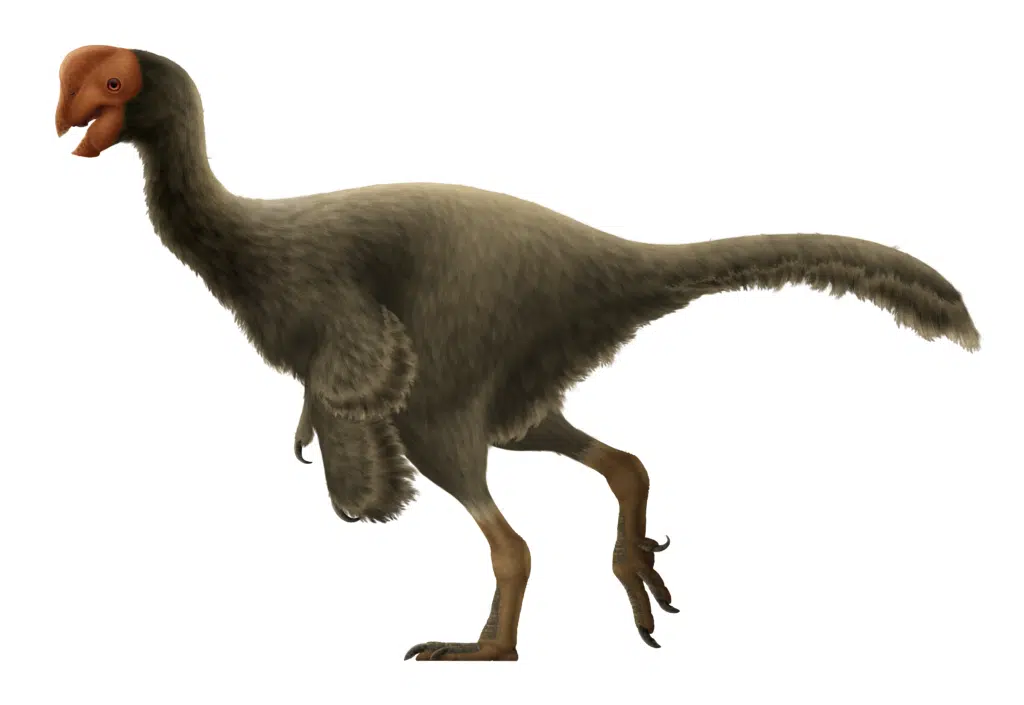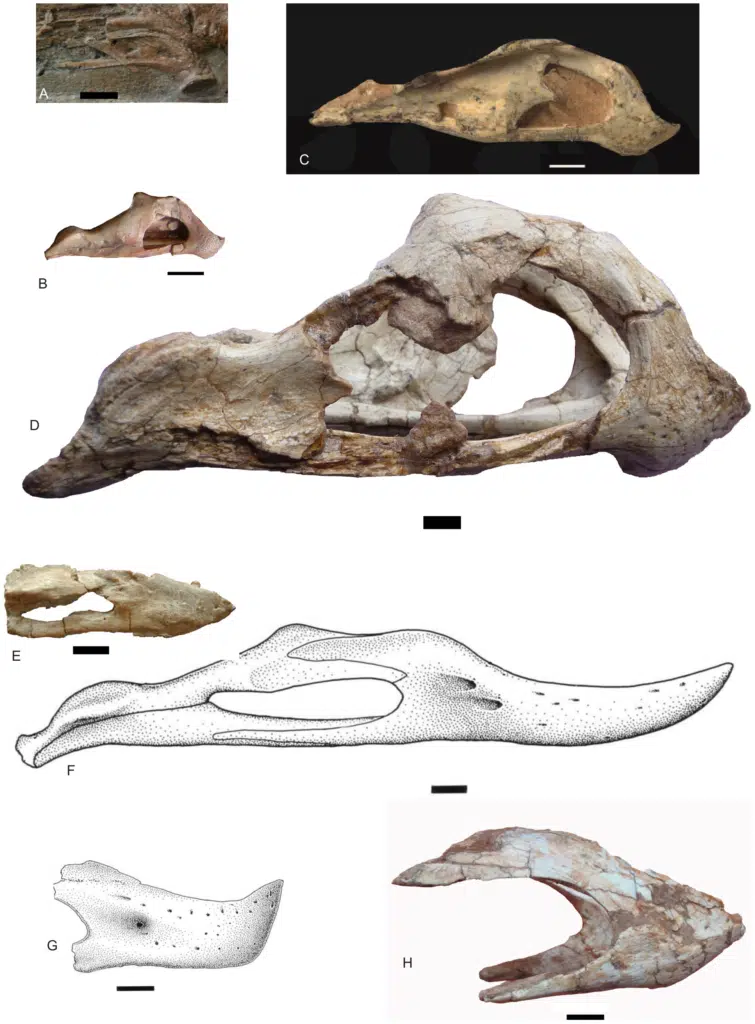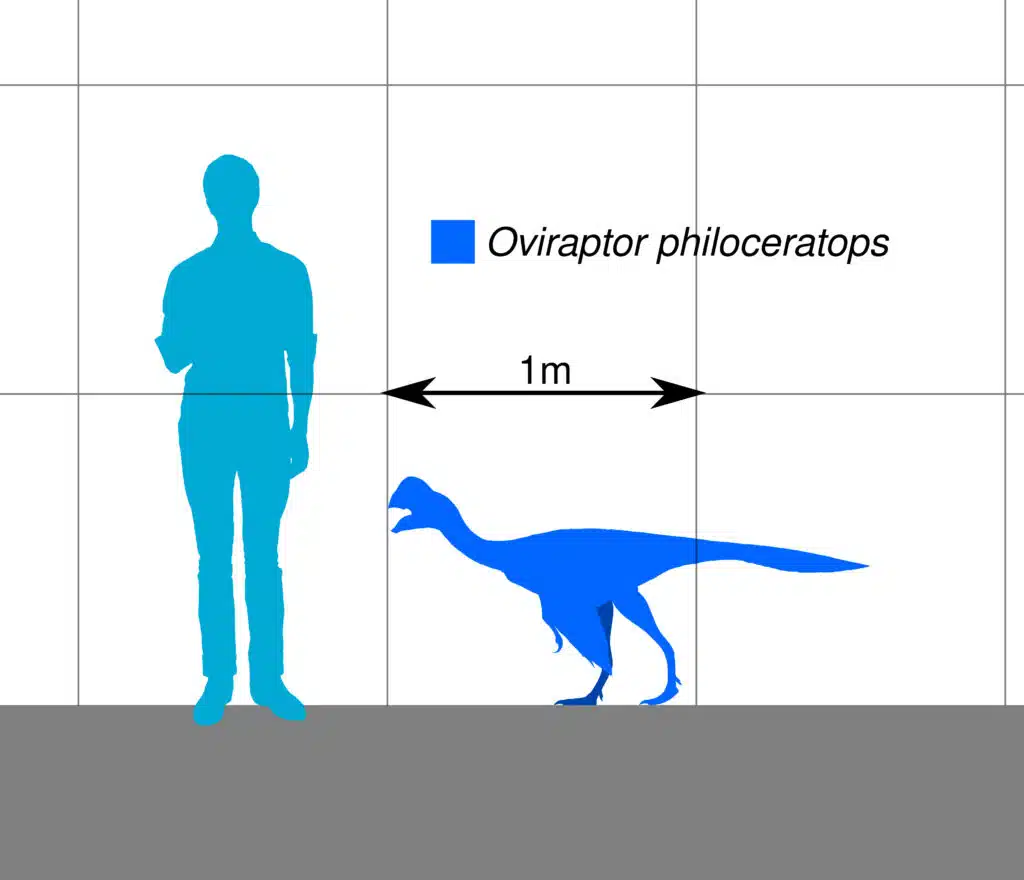In the realm of prehistoric creatures, few dinosaurs have been as misunderstood as the Oviraptor. Its name, derived from Latin, paints a picture of an ‘egg thief’–a reputation that has long overshadowed the true nature of this intriguing dinosaur. Recent discoveries have begun to challenge this perception and reveal a creature far more complex and fascinating than previously thought.
The Oviraptor hails from the Late Cretaceous period, a time when dinosaurs dominated the land. Found primarily in Asia, this dinosaur was a part of the Oviraptoridae family, a group known for their bird-like features. Despite its initial portrayal as an egg thief, this story is one of scientific discovery and the constant evolution of our understanding of the prehistoric world.
Key Facts
| Keyword | Fact |
|---|---|
| Oviraptor pronunciation | OH-vee-RAP-tor |
| Meaning of name | ‘Egg thief’ |
| Group | Oviraptoridae |
| Type Species | Oviraptor philoceratops |
| Diet | Omnivorous |
| When it Lived | 89.8 to 70.6 MYA |
| Period & Time | Late Cretaceous |
| Epoch | Coniacian to Late/Upper Campanian |
| Length | 6.6 ft |
| Height | 3.0 to 4.9 ft |
| Weight | 0.02 tons |
| Mobility | Moved on two legs |
| First Discovery | 1923 by Roy Chapman Andrews |
| Location of first find | Djadokhta Formation of Mongolia |
| Described by | 1924 by Henry Fairfield Osborn |
| Holotype | AMNH 6517 |
Oviraptor Origins, Taxonomy and Timeline
The Oviraptor, with a name that translates to ‘egg thief’, is a genus of the oviraptorid dinosaur family. This name was given due to the initial belief that this dinosaur stole and consumed eggs, a theory that has since been challenged. The etymology of the name is a testament to the ever-evolving nature of paleontological understanding.

Taxonomically, this dinosaur belongs to the Saurischia clade and the Theropoda group. Its family is Oviraptoridae, and it belongs to the subfamily Oviraptorinae. The type species is Oviraptor philoceratops.
Our dinosaur lived during the Late Cretaceous period. This timeline situates it in the end of the Mesozoic era, a period known for the dominance and eventual downfall of dinosaurs.
Discovery & Fossil Evidence
The first remains were discovered in 1923 during a paleontological expedition led by Roy Chapman Andrews. The expedition, which took place in the Djadokhta Formation of Mongolia, led to the discovery of a partial skeleton, a nest of about fifteen eggs, and several small fragments from a juvenile. This discovery marked the beginning of our understanding of the Oviraptor.

The initial interpretation of these fossils led to the assumption that it was an egg thief, a belief that was reinforced by the discovery of an Oviraptor fossil atop a nest of eggs. However, later studies have suggested that the eggs may have belonged to the Oviraptor itself, indicating that it may have been a caring parent rather than an egg thief.
Further fossil evidence has been discovered in other parts of Asia, including Tajikistan. These discoveries have helped to broaden our understanding of its geographical range and lifestyle. Each new find adds another piece to the puzzle, helping to paint a more accurate picture of this fascinating dinosaur.
Oviraptor Size and Description
The Oviraptor’s rich history of varying interpretations, alongside its bird-like features and bipedal locomotion, set it apart from many other dinosaurs of its time. Let’s delve into a more detailed description of this dinosaur and its size.
Short description of Oviraptor
This was a small theropod dinosaur with a distinctly bird-like appearance. It had a rounded head and a beak-like mouth devoid of teeth. Its neck was long and slender, leading to a robust body supported by two hind limbs. Its tail was stiff and likely used for balance during movement.
It moved on two legs, a trait common among theropods. The legs were strong and well-suited for swift movement. The dinosaur’s skin is believed to have been covered in feathers, further reinforcing its bird-like appearance. As for its speed, while exact estimates are not available, its build suggests that it was likely a fast runner.
Size and Weight of Type Species
This was a relatively small dinosaur. It measured about 2.0 meters (6.6 feet) in length, making it one of the smaller theropods of its time. As for its weight, estimates suggest that it weighed around 20 kilograms (0.02 tons). This lightweight build would have contributed to its agility and speed.

These size estimates are based on the fossil evidence available, and it’s important to note that individual sizes could have varied. As with all aspects of paleontology, our understanding of the Oviraptor’s size and weight is subject to change as new discoveries are made.
The Ultimate Dino Quiz
Do you want to test your knowledge of dinosaurs? Then try this Ultimate Dino Quiz! Don’t worry if you get some of the answers wrong, and look at it as an opportunity to refresh and improve your knowledge!
Don’t forget to try our other games as well!
The Dinosaur in Detail
The Oviraptor is a testament to the diversity and adaptability of dinosaurs. Its bird-like features, including its beak and probably-feathered body, set it apart from many other dinosaurs of its time. These features likely played a crucial role in its survival, allowing it to thrive in its environment.
One of the most notable specimens is the ‘Big Mama’, a fossil discovered in a brooding position over a nest of eggs. This discovery challenged the initial perception of this dinosaur as an egg thief and suggested that it was a caring parent. This shift in understanding underscores the dynamic nature of paleontological research.
The Oviraptor’s omnivorous diet is another aspect that sets it apart. While many theropods were carnivorous, this theropod likely fed on a variety of foods, including hard fruits, eggs, and possibly shellfish. This dietary flexibility would have been a significant advantage that allowed it to make the most of the resources available in its environment.
Interesting Points about Oviraptor
- The name means ‘egg thief’, a moniker that has since been challenged by new discoveries.
- Despite its reputation as an egg thief, fossil evidence suggests that it was a caring parent that brooded over its eggs.
- It was an omnivore, a trait that sets it apart from many other theropods. Its diet likely included hard fruits, eggs, and possibly shellfish.
- The physical characteristics, including its beak-like mouth and probable feathered body, suggest a close relationship with birds.
- The fossils have been found primarily in Asia, indicating that it was a part of the diverse dinosaur fauna of this region during the Late Cretaceous period.
The Oviraptor in its Natural Habitat and Environment
The Oviraptor was an Asian dinosaur that lived during the Late Cretaceous period, a time when the Earth’s climate was warmer than it is today. This period was characterized by high sea levels and the presence of numerous inland seas. The habitat was likely a mix of forests and open plains, providing ample resources for an omnivorous dinosaur.
Its omnivorous diet of hard fruits, eggs, and possibly shellfish was likely influenced by the variable environments it inhabited. This dietary flexibility would have allowed it to exploit these various environments and food sources. Its bipedal locomotion suggests that it was a swift runner, capable of hunting for food and evading predators.
The social behavior of this dinosaur remains a topic of speculation. The discovery of an Oviraptor fossil in a brooding position over a nest of eggs suggests that it may have exhibited parental care, a trait shared with many modern birds. This behavior, coupled with its bird-like physical characteristics, emphasizes the close relationship between dinosaurs and birds.
Contemporary Dinosaurs
The Oviraptor shared its existence with an intriguing array of contemporaries. These dinosaurs, each with their own evolutionary adaptations, were part of a complex ecosystem in Late Cretaceous Asia where survival was the ultimate game.
The Protoceratops was a smaller contemporary herbivore, its life revolving around a ceaseless search for plant food. Its presence might have been a source of intrigue for our main dinosaur, a known omnivore. The Oviraptor, with its bird-like beak, could have been a competitor for the same resources or perhaps even seen the Protoceratops as potential prey, adding a layer of complexity to their coexistence.
The Velociraptor, on the other hand, was a swift predator. Its presence would have added an element of danger and competition to this world. Even though the Oviraptor was larger it would have had to be wary of this agile hunter. The Pinacosaurus, an armored dinosaur, would have been a formidable sight in contrast to these two smaller contemporaries. Its heavily armored body would have been a challenge for any potential predator, likely deterring even the opportunistic Oviraptor.
Lastly, the Gallimimus, with its ostrich-like form and swift speed, would have added a unique dynamic to the environment. Its speed could have made it a difficult target for the Oviraptor, encouraging our central dinosaur to rely more on its cunning and adaptability. These interactions, potential competitions, and survival strategies paint a vivid picture of the Oviraptor’s world, a testament to the intricate balance of prehistoric life.
Featured Image Credit: PaleoNeolitic, CC BY 4.0, via Wikimedia Commons
Sources
- Caenagnathids of the Dinosaur Park Formation (Campanian) of Alberta, Canada: anatomy, osteohistology, taxonomy, and evolution
- https://www.tandfonline.com/doi/abs/10.1080/02724634.2017.1347177?journalCode=ujvp20
- A New Oviraptorid Dinosaur (Dinosauria: Oviraptorosauria) from the Late Cretaceous of Southern China and Its Paleobiogeographical Implications | Scientific Reports
- A New Large-Bodied Oviraptorosaurian Theropod Dinosaur from the Latest Cretaceous of Western North America | PLOS ONE
- Caenagnathidae from the Upper Campanian Aguja Formation of West Texas, and a Revision of the Caenagnathinae
The information in this article is based on various sources, drawing on scientific research, fossil evidence, and expert analysis. The aim is to provide a comprehensive and accurate overview of the Oviraptor. However, please be aware that our understanding of dinosaurs and their world is constantly evolving as new discoveries are made.
This article was last fact checked:Joey Arboleda, 06-12-2023
